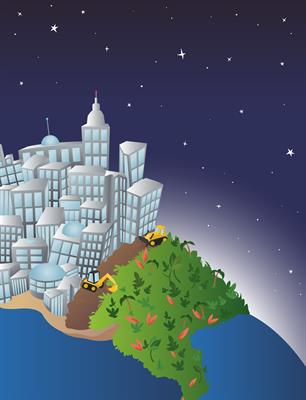
Tropical Biodiversity: Why should we care?
Collection Editors
Ana Maria Almeida, Chelsea SpechtViews
456,856 viewsParticipating Sections
Submission Deadline
Closed
Articles

Biodiversity
07/03/2019
What Are Biodiversity Hotspots?
Authors
Melanie Merritt, Maria Eduarda Maldaner, Ana Maria Rocha de...
Biodiversity
21/12/2018
Is Arthropod Biodiversity on the Rainforest Floor...
Authors
Malte Jochum, Andrew D. Barnes
Biodiversity
05/12/2018
Diversity of Tropical Spiders
Authors
Matjaž Kuntner, Ingi Agnarsson
Biodiversity
29/10/2018
Important Human Parasites of the Tropics
Authors
Binh Cao, Pascale S. Guiton
Biodiversity
10/09/2018
Water Controls Amazonian Biodiversity
Authors
Amanda Frederico Mortati, Thiago André
Biodiversity
25/06/2018
The Cerrado Biome: A Forgotten Biodiversity...
Authors
Gabriel Damasco, Clarissa Fontes, Renata Françoso, Ricardo...
Biodiversity
26/01/2018
Are There Wild Bamboos in Mexico?
Authors
Eduardo Ruiz-Sanchez, Lynn G. Clark
Biodiversity
22/12/2017
Shells in Trouble—Turtle Ecology, Conservation...
Authors
Jonathan J. Fong, Yik-Hei Sung
Biodiversity
13/12/2017
There Is More to Corn than Popcorn and Corn on...
Authors
Alma Piñeyro-Nelson, Daniela Sosa-Peredo, Emmanuel...About this collection
When we look at our planet’s species distribution, we observe a very interesting pattern: as we move from the Poles to the Equator, the number of species drastically increases. This is what has been called ‘latitudinal gradient of species diversity’. In short, it means that tropical areas, which are located between the Tropic of Cancer and the Tropic of Capricorn, harbor a greater number of species than temperate areas. We still don’t know exactly what causes (or have caused) this phenomenon, but we know that it resulted in high endism, that is, a large number of animals and plants unique to these areas.The tropical areas of the globe are an intricate patchwork of various ecosystems. Tropical ecosystems can vary from rainforests to deserts; from savannahs to mangroves, and we have a lot to learn from them. However, in recent years we have witnessed an increase in rates of habitat destruction, particularly in the tropics. Currently, many tropical ecosystems are under threat, as vast areas are devastated to give space to cities, agriculture, and cattle farms. As tropical areas vanish, so do species previously unknown to us, as well as ecological processed specific to these environments. Moreover, due to its global importance, devastation of tropical areas has potential impacts on other non-tropical ecosystems, and may exacerbate climate change, as well as influence the spread of tropical diseases.
On the other side of this battle, there are many scientists that dedicated themselves to the study of the fascinating tropical biodiversity. This collection of articles aims at highlighting their contributions to our understanding of tropical patterns and processed leading to this incredible biodiversity. It focuses on the wonders of the tropical areas of the globe, by asking, amongst others, the following questions: Which species of plants and animals are found in tropical areas? What can we learn about tropical ecology and how can this knowledge help us conserve these ecosystems for future generations?
Would you like to submit to this collection?
For researchers interested in submitting to this Collection, please consult our author guidelines and check that you have all the essentials included before submitting








